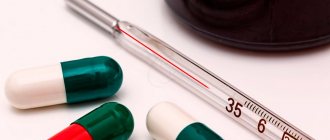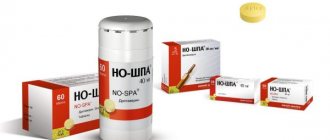Let's figure it out
The main task for parents in this situation is to calm down and find the reasons that influenced the appearance of such symptoms.
It is necessary to analyze the previous events of this day and answer the following questions:
- What did the child eat these days that could cause diarrhea or vomiting and what resulted in a febrile fever?
- Was there a possibility of contact with other children who might have an infectious disease?
- When examining the child’s body, did you find a rash or signs of itchy skin?
It is worth mentioning that in medical practice, cases of high temperatures along with loose stools are quite common. Not in all situations this means an infectious disease, but only professionals, doctors, competent in this area, can figure this out - refute or still confirm - and whose help you should definitely resort to.
Vomiting, diarrhea, temperature 37.5 in a child: main causes
Diarrhea, vomiting and fever are quite often the result of an acute intestinal infection. Actually, these symptoms reflect the entire pathogenesis of the disease. The scheme is as follows: the infectious agent enters the body with food and begins to rapidly multiply and move from the esophagus to the stomach, then to the intestines. As the troublemaker moves deeper, the body's defensive reaction manifests itself in the form of a sequential inclusion of symptoms.
But rotavirus infection is not the only reason that can cause such consequences. The following can lead to similar results:
- coli;
- food poisoning;
- helminthiasis (worms);
- teething;
- sore throat, pharyngitis;
- taking antibiotics and, as a result, dysbacteriosis;
- inflammation of the appendix.
Sometimes this condition in a child can be caused by overeating.
Possible reasons
A high temperature together with diarrhea or vomiting generally threatens dehydration, so it is very important to go to a clinic, where professional consultation and diagnosis by a doctor will be provided and comprehensive treatment will be prescribed.
A temperature of 39ºC and nausea, vomiting, diarrhea in children aged 5 years can be caused by infectious causes (giving various complications) and non-infectious causes (mild illness with quick recovery). And here the temperature can last a long time - from several days to weeks.
Diseases caused by non-infectious and infectious factors exhibit similar symptoms, but the treatment is completely different.
If your child's temperature rises to 39ºC at the age of five and diarrhea begins, there is no need to wait for recovery on its own, you need to find the cause. This will give a chance to quickly and efficiently organize the necessary assistance and treatment.
| Cause | Symptoms |
| Non-infectious factors |
|
| Infectious factors |
|
Non-infectious factors
In case of objects of non-infectious origin for the appearance of indigestion with increased hyperthermia, recovery without medical care and intervention occurs quickly, the temperature lasts a day or two.
Unsuitable or poor quality products
For the body at 5 years old, a violation of the nutritional system acceptable for this age period, the use of products with a large amount of dyes, flavors, taste enhancers and other chemicals that are unacceptable for a child’s immature ventricle. What an adult can eat can have a negative impact on a child’s body: smoked meats, chocolate, mushrooms, carbonated drinks and much more.
Adverse reactions to medications
Occurs when taking medications that contain iron. If such a reaction to medications occurs, you should stop taking them and seek medical advice. In the future, when contacting doctors of any profile, it is always necessary to inform about the peculiarity of intolerance to a certain medication.
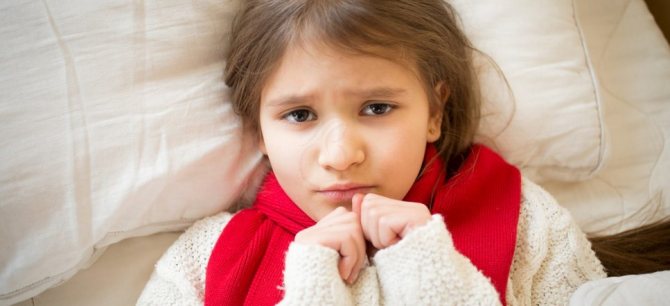
Acetonemic syndrome
It appears when the amount of ketone bodies in the blood increases. This process can be provoked by: deficiency, consumption of small amounts of carbohydrates in food, the appearance of any infectious disease, improper stress on the stomach and intestines, and mental stressful situations.
Among the first symptoms are a high temperature of up to 39℃ and above, which does not last long, diarrhea, and then secondary symptoms - the smell of acetone from the mouth, constant nausea and vomiting, after a while replaced by constipation.
Infectious factors of diarrhea
Among the types of infectious diarrhea, there are invasive, secretory and osmotic. All these forms of diarrhea are of infectious origin, begin abruptly, acutely, and are accompanied by the appearance of fever and profuse loose stools.
Invasive, bloody diarrhea
Bacteria attack the mucous membrane in the intestines, this is accompanied by distinctive blood discharge, fever, and intoxication occurs.
Secretory, watery diarrhea
It is characterized by the penetrating penetration of pathogens into the enterocytes of the intestine; a process occurs when a process of poisoning with dangerous toxic substances occurs in the body. This provokes the appearance of a temperature of about -39ºC and intestinal disorders.
Osmotic diarrhea
Infection of enterocytes by viruses, their destruction.
If a body temperature of 39ºC appears on the thermometer, and at the same time a 5-year-old child goes to the toilet with diarrhea, may feel sick and vomit, are associated with the onset of “traditional” childhood diseases, the most correct decision would be to consult a doctor who will conduct a professional diagnosis and will prescribe the necessary measures for treatment.
When factors such as high fever (up to 39ºC) and loose stools appear in a child, due to the onset of flu or sore throat, a very thorough external examination is necessary. Upon examination, other symptoms are determined: nausea, red throat, enlarged tonsils, the child’s stuffy nose, possible cough or sore throat.
Search for a possible disease by external signs
| Observable symptoms | External manifestation | Causes |
| Diarrhea with blood, temperature 39ºC and above, does not last long, goes away quickly | Expression of holistic intoxication of the body, severe fever | Invasive diarrhea, influence of intestinal infection |
| Diarrhea with mucus, temperature 39ºC and above, lasts 3-5 days, hard to break down | It’s hard to bring down the temperature, frequent bowel movements | Infections – Giardia, Salmonella, Cryptosporidium Possible rotavirus infection or enterovirus |
| Diarrhea and a temperature of 39ºC are complemented by vomiting; the temperature drops quickly, but it is difficult to go down | The child is pale, arms and legs are cold | Possible food poisoning |
| Diarrhea and a temperature of 39ºC are complemented by abdominal pain, the temperature lasts 2-4 days and goes down | The child is weak, signs of apathy | Poor quality food (stale, unprocessed) or stomach infection (rotovirus, enterovirus) |
| Diarrhea and a temperature of 39ºC are complemented by a rash on the body of a 5-year-old child; the fever can last for a completely different period of time depending on the cause | Externally there is a rash on the child’s body or mucous membranes | Allergic reaction to medications, rubella, measles, scarlet fever, chickenpox |
| Along with diarrhea and a temperature of 39ºC, cold symptoms are observed; the temperature usually goes down and lasts 2-6 days | Stuffy nose, red throat and possible cough | Flu, sore throat, nasopharyngitis |
Intestinal infection
After ARVI, the intestine is the next place most often affected by pathogens. There is probably no person in the world who does not know this unpleasant condition, when fever, vomiting and diarrhea attack simultaneously. To be sure of the diagnosis, pay attention to the color of the stool: in the case of an intestinal infection, they will have a greenish color.
A baby whose diet contains nothing but dairy products cannot have any other colors except light brown, even in theory. An older child who eats a varied diet may have different stool colors. Intestinal infection in children of this age who feed only on breast milk and milk supplements is puzzling. At some stage, hygiene rules were violated, and the disease entered the baby’s body.
This combination of symptoms, such as diarrhea and vomiting, makes an intestinal infection dangerous. The main danger is the very high probability of dehydration, which can even lead to death. A similar outcome is even more possible if the cause of the disease is intestinal flu, also known as rotavirus. Diarrhea, vomiting and fever in this case become one of the main causes of child mortality. This type of infection was discovered not so long ago, but developed countries have already seen its power and are practicing mandatory vaccination against rotavirus.
If a child has vomiting, diarrhea, or fever, what should you do? Considering that the main danger is dehydration, the direction of possible treatment suggests itself. We must do everything we can to prevent this dehydration. If a child has vomiting, diarrhea and fever, then first of all he should drink a lot.
Diarrhea along with vomiting removes a huge amount of microelements and salts from the body, the loss of which should be taken into account when preparing a drink for a sick child. Special nutritious drinks are available in pharmacies specifically for these cases. It is easy to prepare it yourself. 2 tbsp. l. sugar, 1 tsp. dissolve salt and baking soda in 1 liter of boiled water. It is advisable to give it to the child warm. The patient should drink this solution until complete recovery.
In some cases, an intestinal infection can provoke gastritis or enteritis; in severe situations, both of these ailments attack together. The cause of the disease may be dysentery or salmonellosis. A very high temperature requires immediate hospitalization of the patient.
Even in the absence of such serious diseases and a clear improvement in the patient’s condition, a special diet is required until the child fully recovers. Milk and dairy products, meat and fruits should be absent. The emphasis should be on porridge and vegetables.
Pay attention to the baby's stool
It is impossible to absolutely accurately determine the disease by the color and nature of the stool, because the body is affected by a large number of viruses and toxins of various origins. But there are certain standard postulates that exist.
| Stool color and character | Possible disease |
| Green color | Salmonella, dysentery, enterovirus, staphylococcus, enterococcus |
| Yellow color | Accelerated intestinal motility or food intolerance, a consequence of eating food that is rough on the stomach, as a result of a stressful situation |
| Black color | Peptic ulcer, gastritis, duodenitis (rare diseases for five-year-old children) |
| Diarrhea with water | Exposure to viral bacilli of different etiologies. If combined with vomiting, then it may be cholera |
| Diarrhea with blood | Infection in the intestines |
| Diarrhea with mucus | Salmonella, enterovirus, enterococcus, rotavirus |
First aid
Parents should not panic! The main rule in such situations is to do no harm! Therefore, you should not act on your own or give any medications. The only correct solution is to give the child as much water as possible to maintain fluid balance due to dehydration.
Naturally, it is necessary to call an ambulance, call a doctor at home and wait for qualified medical assistance and the appointment of further comprehensive treatment.
While waiting for the doctor:
- the child is provided with peace;
- moderately cool, humid room;
- Boiled water is given after each loose stool;
- It is not recommended to give tea, lemon tea, or herbal decoction to drink, they can only worsen diarrhea;
- It is prohibited to force-feed a child; food is a favorable breeding ground for bacteria and viruses, which can even cause vomiting. Children with fever and diarrhea are not recommended to be given milk, fruits, fatty, salty foods, chocolate, fast food, chips, crackers, nuts... Let the stomach and intestines be empty;
- Give age-appropriate antipyretic medication (based on Paracetamol or Ibuprofen). It is better to use an anti-diarrhea remedy after consulting a doctor;
- After the child’s condition has normalized, it is necessary to return to the normal diet gradually, avoiding fatty, fried, heavy foods, juice, fruits and dairy products. Let it be a light diet: vegetables, rice porridge with water, boiled chicken, fermented milk products, viscous light soups.
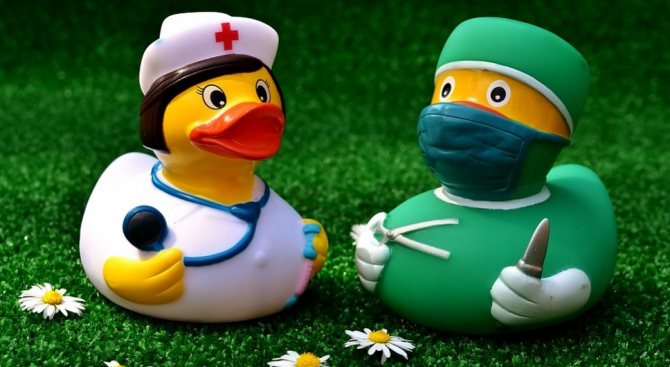
While waiting for a doctor you cannot:
- Bathing a child at high temperatures;
- Wrap yourself in a blanket (if there is no chill);
- Give the child Analgin, Aspirin, even if the temperature lasts a long time;
- Carry out vodka rubdowns (or alcohol-containing products);
- Give your child antibiotics without a doctor's prescription.
What can be prescribed for treatment?
In order to eliminate diarrhea in children 5 years old, the doctor may prescribe the following:
- Polyphepane
- Neosmectina
- Enterosgelya
- Smecty
- Activated carbon
In order to lavage the stomach by inducing vomiting, it is possible to use a weak solution of potassium permanganate, and to maintain normal water balance in the body - saline solutions, Regidron, Glucose, boiled water.
In order to reduce high fever in children, Viferon suppositories, syrups based on ibuprofen or paracetamol are used.
Antibiotics are prescribed only by doctors, according to indications and in severe situations.
Bifidobacteria and lactobacilli are used to restore microflora.
What should parents do?

Any disease requires timely effective treatment, with the participation of qualified specialists. Everyone understands this perfectly well, but not everyone acts this way. Some from lack of time, others from a reluctance to go to hospitals, and others believe that it will go away on its own. It is important to understand that the simultaneous presence of acute symptoms, such as abdominal cramps, profuse vomiting, diarrhea against the background of an elevated temperature in a child, requires immediate medical attention! No self-medication! Each of these symptoms alone causes significant dehydration. And with a simultaneous effect on the body, they reinforce each other.
Thus, in children, an increase in temperature often provokes vomiting, which, in turn, accelerates the metabolic process, accompanied by the release of thermal energy. When vomiting, it is quite problematic to bring down the temperature, because antipyretic drugs again provoke the gag reflex. The circle is closed. In such a situation, symptomatic treatment must begin with the symptom that predominates over all, which at the moment causes the greatest harm to the patient.
To alleviate the child’s condition before the doctor arrives, you can use the following means:
- to remove toxins from the body - Smecta, Enterosgel or sorbent;
- to reduce the level of dehydration - Regidron;
- for hyperthermia - Efferalgan in syrup;
- To avoid causing a gag reflex, wipe the child with a vinegar solution. Vinegar 9% is diluted in a 1:1 ratio with warm water.
Diagnostics
Thanks to the latest technologies, it is possible to obtain reliable examination results, on the basis of which the attending physician will prescribe the correct comprehensive treatment, without putting the child at risk of complications.
- Copogram - find out if there are any disturbances in digestion;
- Stool analysis - the state of the microflora, whether dysbacteriosis is inherent, whether there are parasites;
- Blood test - will help determine the presence of an inflammatory process in the body, symptoms of helminthiasis, allergic symptoms;
- Biochemical blood test - will determine the presence of malfunctions: liver, pancreas;
- Ultrasound examination of the abdominal cavity - provides a general idea of the condition of the gallbladder, pancreas and liver.
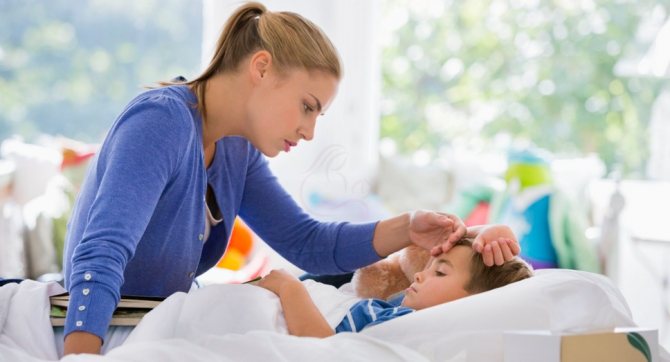
Complications
Yes, if treatment is not started in a timely manner, various complications can develop:
- Unexpected seizures - children's, immature brains are more susceptible to attacks of involuntary muscle contraction.
- Worsening nausea and vomiting.
- Short-term loss of consciousness by a child, fainting.
- A dehydrated body is at a critical level - children have several times more body area compared to an adult, so their body requires more water. And with high fluid loss associated with a body temperature of 39ºC and diarrhea, the child is overtaken by painful conditions of various types, including death.
- Functional changes in the intestines (frequent loose stools, constipation, flatulence)
- Dysbacteriosis is a decrease in the number of beneficial microorganisms in the intestines, and an increase in harmful ones. This provokes disruption of the functioning of the gastrointestinal tract.
- Prolapsing rectum
- In the most difficult and advanced situations, death is possible
Complications in the situation of a temperature of 39ºC, vomiting, nausea and diarrhea in a 5-year-old child are extremely rare, but do occur. Therefore, it is necessary to know about their possibility in order to be able to avoid getting confused when providing first aid. And it’s even better and more effective to simply prevent the occurrence of diarrhea with high fever by engaging in their prevention.
Temperature 39 and vomiting in a child - what could it be?
Such unpleasant symptoms may occur due to the following reasons:
- an intestinal virus has entered the body;
- poisoning with medications, food, chemical compounds;
- inflammation of the gastrointestinal tract, primarily gastroenteritis and appendicitis;
- inflammation and colds.
Intestinal infection
Most often, acute abdominal pain, temperature 39 with fever and nausea in a 1-year-old child indicate an intestinal infection.
These are a number of pathogens, and all of them have a detrimental effect on the gastrointestinal tract, or more precisely:
- rotavirus and enterovirus infection;
- cholera;
- dysentery;
- typhoid fever;
- salmonellosis.
The immunity of a one-year-old child is not yet fully formed, and it is difficult for him to fight all pathogenic bacteria on his own. Infection can be the result of eating contaminated foods, liquids, or transmitted through household contact from a sick person.
Rotavirus is often encountered in children; at the initial stage of the disease, the symptoms are very similar to influenza or ARVI.
In case of intestinal infections, a 1-year-old child vomits repeatedly and does not bring adequate relief; greenish stool, possibly with bloody impurities, mucus or foam. Temperature can reach 40℃. If you do not start timely therapy, this condition can persist for quite a long time, and also lead to exhaustion and dehydration of the body.
Intoxication
Vomiting, nausea, and high fever in a 1-year-old child may be symptoms of intoxication.
The most common causes of poisoning:
- stale or poor quality food;
- exposure to chemicals or toxic compounds;
- overdose or side effects from medications;
- concomitant viral disease causing such intoxication.
In this case, microbes penetrate inside and affect the gastric mucosa, thereby disrupting its functioning.
A couple of hours after poisoning, the condition will begin to worsen. The child develops chills, pallor, headache, and lack of appetite.
Inflammation and ARVI
Inflammation of the respiratory tract and colds are often accompanied by hyperthermia. A rapid increase in temperature in a child up to 39 a year can provoke vomiting; it is still difficult for the body to overcome the virus. But in this case it is not dangerous, and, as a rule, the urge to vomit is one-time.
The cause of vomiting in a one-year-old child can be a cough. When the baby starts coughing, sputum from the bronchi goes into the stomach, which provokes the first one. With ARVI and inflammation, diarrhea and stomach problems are usually not observed.

A temperature of 39 and vomiting in children may also indicate teething.
But in this case, the latter is not a consequence of teething itself, but of the fact that the child’s hands are constantly in the mouth.
Diseases of the gastrointestinal tract
During the period of exacerbation of gastrointestinal diseases, the child may experience headache, fever, fever and vomiting.
Such diseases include:
- hepatitis of viral origin;
- enterocolitis;
- enteritis;
- gastritis.
Nausea and vomiting in a one-year-old child is the very first warning sign of illness. Subsequently, the stomach will begin to ache in the location where the diseased organ is located. All this may be accompanied by bloating and intestinal disorders.
All these symptoms are observed in acute appendicitis, and then surgery cannot be avoided.
| Reason for temperature 39℃ | Other symptoms | What to do? |
| Intestinal infection | Frequent vomiting, diarrhea, fever, drowsiness, abdominal discomfort. | Call a doctor. During the waiting period, give plenty of fluids in small portions. |
| Inflammation and ARVI | Periodic vomiting, intense cough, fever. | Invite a local doctor to prescribe treatment. |
| Intoxication | Lack of appetite, loss of strength, abdominal pain, diarrhea, rapidly rising temperature. | Call the doctor as quickly as possible, or better yet, call an ambulance, and in the meantime give the baby Regidron solution. |
| Meningitis | Fear of light, fever, vomiting, skin rash, vomiting, neuralgic manifestations. | This is a direct threat to the child’s life, and you need to call “03” as soon as possible. |
| Appendicitis | Sharp acute pain in the abdomen, lethargy, occasional vomiting. | Call an ambulance, since such a pathology threatens the child’s health, and urgent surgical intervention is necessary to avoid peritonitis. |
Preventive measures
It is much easier to prevent the occurrence of any disease than to treat it. To eliminate the possibility of intestinal infections and indigestion, you must:
- The child should receive only high-quality food. There is no question of expired food products, and there are no dyes in their composition. Fast food and drinks containing gases are naturally prohibited at the age of five.
- It is important for a child’s nutrition to be organized according to age standards (smoked foods, seafood, chocolate, mushrooms are not allowed for children).
- It is necessary to organize balanced baby food.
- It is necessary to strengthen the immune system, because infections mainly affect weakened organisms.
- A favorable climate in the family and the child’s environment includes the absence of stressful situations and a positive psychological atmosphere.
- Hygiene! It is necessary to follow simple hygiene rules - wash your hands, eat clean and thermally processed foods.

